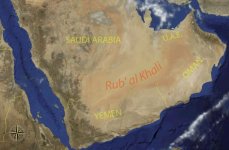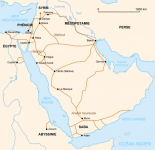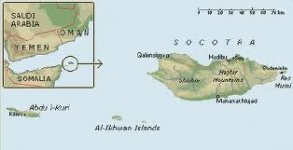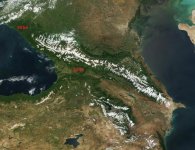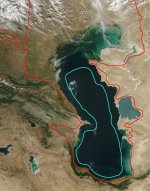Angela
Elite member
- Messages
- 21,823
- Reaction score
- 12,329
- Points
- 113
- Ethnic group
- Italian
This is a very interesting, comprehensive, and provocaative paper doing for mtDna RO1 what a recent paper did for U6. Even though this is all modern dna, through the use of whole genomes and very careful subclade analysis they are giving us some very valuable information about population genetics which can serve as an adjunct to autosomal analysis.
See:
Landini et al (Achili, Cruciani and Semino are also authors): "Mapping human dispersals into the Horn of Africa from Arabian Ice Age refugia using mitogenomes
https://www.researchgate.net/public...rom_Arabian_Ice_Age_refugia_using_mitogenomes
"Rare mitochondrial lineages with relict distributions can sometimes be disproportionately informative about deep events in human prehistory. We have studied one such lineage, haplogroup R0a, which uniquely is most frequent in Arabia and the Horn of Africa, but is distributed much more widely, fromEurope to India. We conclude that:
(1) the lineage ancestral to R0a is more ancient than previously thought, with a relict distribution across the Mediterranean/Southwest Asia;
(2) R0a has a much deeper presence in Arabia than previously thought, highlighting the role of at least one Pleistocene glacial refugium, perhaps on the Red Sea plains;
3) the main episode of dispersal into Eastern Africa, at least concerning maternal lineages, was at the end of the Late Glacial, due to major expansions from one or
more refugia in Arabia;
(4) there was likely a minor Late Glacial/early postglacial dispersal from Arabia
through the Levant and into Europe, possibly alongside other lineages from Levantine refugium; and
(5) the presence of R0a in Southwest Arabia in the Holocene at the nexus of a trading network that developed after ~3 ka between Africa and the Indian Ocean led to some gene ow even further aeld, into Iran, Pakistan and India."
Number 2 may refer to the "Red Sea" component which Dienekes was tracking with some experiments.
Number 3 is of interest concerning the many debates over when major gene flows from Arabia to East Africa took place. It's also interesting that as the ancient dna comes in, there is agreement between it and uniparental analysis about the importance, indeed predominant importance, of these postglacial dispersals.
Number 4 may have something to say about our recent debates as to whether there was postglacial movement from the Near East into Europe before the Neolithic.
As I plow through it, I'll post things of interest.
See:
Landini et al (Achili, Cruciani and Semino are also authors): "Mapping human dispersals into the Horn of Africa from Arabian Ice Age refugia using mitogenomes
https://www.researchgate.net/public...rom_Arabian_Ice_Age_refugia_using_mitogenomes
"Rare mitochondrial lineages with relict distributions can sometimes be disproportionately informative about deep events in human prehistory. We have studied one such lineage, haplogroup R0a, which uniquely is most frequent in Arabia and the Horn of Africa, but is distributed much more widely, fromEurope to India. We conclude that:
(1) the lineage ancestral to R0a is more ancient than previously thought, with a relict distribution across the Mediterranean/Southwest Asia;
(2) R0a has a much deeper presence in Arabia than previously thought, highlighting the role of at least one Pleistocene glacial refugium, perhaps on the Red Sea plains;
3) the main episode of dispersal into Eastern Africa, at least concerning maternal lineages, was at the end of the Late Glacial, due to major expansions from one or
more refugia in Arabia;
(4) there was likely a minor Late Glacial/early postglacial dispersal from Arabia
through the Levant and into Europe, possibly alongside other lineages from Levantine refugium; and
(5) the presence of R0a in Southwest Arabia in the Holocene at the nexus of a trading network that developed after ~3 ka between Africa and the Indian Ocean led to some gene ow even further aeld, into Iran, Pakistan and India."
Number 2 may refer to the "Red Sea" component which Dienekes was tracking with some experiments.
Number 3 is of interest concerning the many debates over when major gene flows from Arabia to East Africa took place. It's also interesting that as the ancient dna comes in, there is agreement between it and uniparental analysis about the importance, indeed predominant importance, of these postglacial dispersals.
Number 4 may have something to say about our recent debates as to whether there was postglacial movement from the Near East into Europe before the Neolithic.
As I plow through it, I'll post things of interest.


